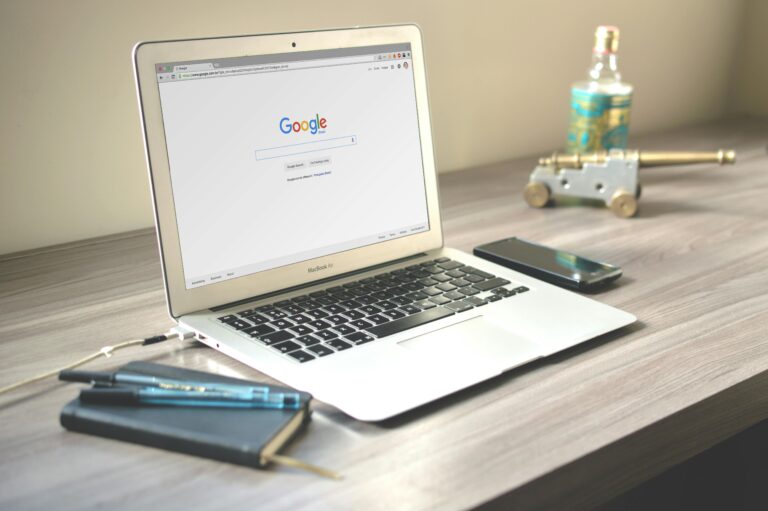Insights into Google Ads Trends for 2025
The Future of Paid Search
The world of digital advertising is constantly evolving, and Google Ads remains at the forefront of paid search marketing. As businesses strive to capture attention in a crowded online marketplace, Google Ads offers unparalleled opportunities for reaching target audiences. However, as we look toward 2025, the landscape of paid search is shifting rapidly. New advancements in technology, automation, and consumer behaviour are reshaping how businesses interact with Google Ads. Marketers must stay ahead of these changes to remain competitive, and the team at Redemption Digital is here to guide you through the trends that will define Google Ads in 2025.
In this article, we’ll explore seven key trends that will shape the future of Google Ads, offering insights into how these shifts will impact paid search campaigns. Each trend is explained with real-world examples, helping businesses prepare for these changes and adapt their strategies for continued success. Let’s dive into the trends that will drive Google Ads in 2025 and show you how partnering with Redemption Digital can help your business thrive in this dynamic environment.
1. The Rise of AI-Powered Campaigns
Artificial Intelligence (AI) is already transforming the digital marketing landscape, and by 2025, it is expected to have an even greater influence on Google Ads campaigns. Google has been increasingly incorporating AI and machine learning into its advertising platform, and this trend is set to continue. For businesses and digital marketing professionals, AI will enable the creation of smarter, more efficient campaigns by automating ad creation, targeting, bidding, and even keyword selection.
Example: Google’s Smart Bidding, which uses machine learning to optimise bids in real-time based on user intent and conversion likelihood, is already a powerful tool. In 2025, expect even more advanced automation features that will make campaign management easier, more precise, and more effective. As AI continues to evolve, we will see a deeper level of personalisation in paid search ads, with Google Ads able to deliver more relevant ads to the right audiences at the right time.
2. Increased Focus on First-Party Data
As privacy regulations tighten and third-party cookies phase out, businesses will have to adapt to a new environment where first-party data becomes more important than ever. First-party data refers to the information businesses collect directly from their users through interactions on their websites, apps, and other owned channels.
In 2025, marketers will be relying more on first-party data to inform their Google Ads campaigns, as it is more accurate and trustworthy than third-party data. This shift will allow businesses to deliver highly targeted ads while respecting user privacy.
Example: Companies like Amazon and Facebook already excel at using first-party data to refine their ad targeting. For example, Amazon uses the data from customers’ browsing and purchase history to deliver tailored ads that are highly relevant to each individual. In 2025, businesses will increasingly integrate their first-party data into Google Ads to improve ad targeting, optimise bids, and enhance customer experiences.
3. Voice Search Optimisation
Budgeting for Google Ads
Voice search is rapidly growing, with more consumers using voice assistants like Google Assistant, Siri, and Alexa to search for information and make purchases. By 2025, it’s predicted that nearly half of all searches will be voice-based. This trend will require marketers to rethink their paid search strategies, particularly for Google Ads.
Voice searches tend to be more conversational and longer than typed searches, which means the keywords and search queries that trigger paid ads may change. Advertisers will need to focus on long-tail keywords and natural language phrases to optimise their campaigns for voice search.
Example: A person might ask their voice assistant, “Where can I find the best pizza in Auckland?” rather than typing “best pizza Auckland.” In response, Google Ads will need to understand this shift and deliver more conversational and locally relevant ads. Brands will need to optimise their keyword strategies to accommodate this growing trend, incorporating natural language into their ad copy and landing pages.
4. The Expansion of Video Ads
When Video content has become one of the most engaging forms of media on the internet, and this trend will continue to grow in 2025. Video ads on platforms like YouTube, Google’s Video Ads network, and even within search results will become an increasingly important part of Google Ads campaigns.
With the rise of mobile devices and the growth of platforms like TikTok, advertisers will look for ways to incorporate short-form and long-form video content into their Google Ads strategies. Video ads provide an immersive and dynamic way to showcase products and services, driving higher engagement and conversions.
Example: Google’s YouTube ads are already a powerful tool, allowing businesses to target users with relevant video content. In the future, expect Google to make it easier for businesses to run ads across multiple video platforms, while providing more in-depth analytics and insights. Advertisers can leverage this data to fine-tune their campaigns, ensuring they deliver the most relevant video content to their target audiences.
5. Automation and Smart Creative Features
As automation continues to evolve, Google Ads will further integrate smart creative features, allowing advertisers to focus less on the manual aspects of ad creation and more on strategy. This will include AI-driven tools that automatically generate ad copy, images, and video content based on campaign objectives and user data.
Google’s Performance Max campaigns, which use automation to deliver ads across multiple Google properties, will likely see even greater adoption by 2025. These campaigns use machine learning to optimise ad delivery and creative elements in real time, allowing businesses to reach users on a wide range of platforms without the need for constant manual adjustments.
Example: Imagine a clothing retailer running a Performance Max campaign. Google’s AI could automatically create multiple ad variations based on the retailer’s product catalog, adjusting the messaging and creative based on user preferences and behaviour. This automation will streamline the ad creation process, allowing marketers to spend less time on repetitive tasks and more time focusing on strategy and analysis.
6. Increased Use of Augmented Reality (AR) in Ads
Augmented reality (AR) is set to become a more prominent feature in Google Ads by 2025. As AR technology improves, it will allow businesses to create immersive, interactive ads that let consumers engage with products before they make a purchase.
AR in Google Ads will enable businesses to showcase their products in a more engaging and interactive way, improving the overall user experience and driving higher engagement. For example, businesses in industries such as fashion, furniture, or cosmetics will be able to create AR experiences that allow users to virtually try on clothes, see how furniture fits in their home, or test makeup products.
Example: IKEA has already experimented with AR through its IKEA Place app, which lets users visualise how furniture will look in their space. By 2025, expect similar AR features to be integrated into Google Ads, allowing users to engage with products directly through their ads. Brands that embrace this technology will have a competitive edge, offering consumers a more immersive and engaging shopping experience.
7. Contextual and Location-Based Targeting
Location-based and contextual targeting are becoming increasingly important in paid search, and in 2025, this will be even more critical. As mobile usage continues to rise, Google Ads will leverage location and context data to deliver highly relevant, timely ads to users based on their physical location and current activity.
Advertisers will be able to target consumers more effectively by considering factors like geographic location, time of day, and local trends. This form of targeting allows businesses to deliver ads that are directly relevant to the consumer’s immediate needs and intentions.
Example: A person searching for “coffee shops near me” on their mobile device will see ads for local coffee shops that are currently open. With location-based targeting, businesses can ensure that their ads are delivered to users at the right moment, increasing the likelihood of conversions. In 2025, we can expect even more sophisticated location-based targeting features in Google Ads, allowing businesses to fine-tune their campaigns for maximum relevance.
Choose Redemption Digital for Your SEM Strategy
The future of paid search is constantly evolving, and staying ahead of the curve requires expertise and a keen understanding of the latest trends. At Redemption Digital, we combine industry-leading insights with data-driven strategies to help businesses thrive in the competitive Google Ads landscape. Whether leveraging AI and automation, optimising first-party data, or adopting innovative ad formats, we tailor SEM strategies that deliver measurable results. Partner with us to ensure your paid search campaigns are not just successful but future-proof.
References
- Skywork Marketing, “Introduction to Smart Bidding with Google Ads”, skyworksmarketing.com
- Forbes, “Why You Should Care About First-Party Data”, www.forbes.com
- Search Engine Journal, “Voice Search: What Is It & How Does It Work?”, www.searchenginejournal.com
- Google Ads Help, “About video ad formats”, support.google.com





